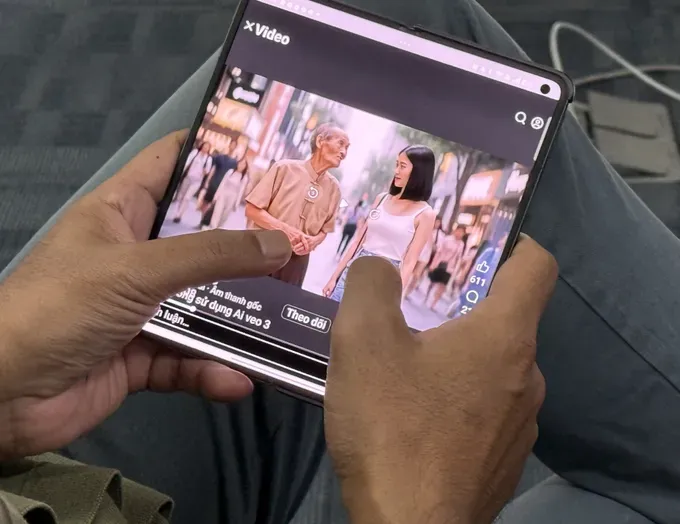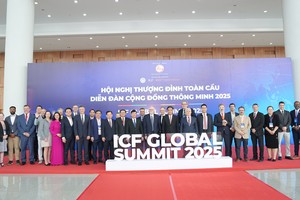
In a local coffee shop, Ms. Loan recoiled from her phone screen. It displayed an AI-generated video of an elderly man, who looked uncannily like her own father, wildly dancing with five provocatively dressed young women in a nightclub. “It’s beyond imagination”, she worriedly shared. “What are we supposed to say if the young children in our family see things like this? It’s a huge problem.”
Her experience is not isolated. Another video shows an old man on a speeding motorbike with three scantily clad young women, shouting, “Get off my back, your bony elbows are digging into me, how can I stand it?” Other clips feature a bikini-clad woman interviewing an elderly man in a market, coaxing him into making derogatory comments about women, or people sharing lewd and vulgar stories about their ex-lovers.
“There are hundreds, if not thousands, of these AI-generated videos on social media now”, said Thanh Hoai, a bank employee. “They feature revealingly dressed women, obscene dialogue about sex, and scenarios that mock our cultural values, all pushed to users by smart algorithms. You can get any kind of video you want made.”
AI video generators like HeyGen, Kling AI, and Luma AI are becoming commonplace, but Veo 3 stands out. Its ability to follow users’ prompts and create video with integrated, vivid audio – from character dialogue to ambient sounds – is a massive leap beyond older models that could only produce silent clips or add simple music. The lifelike quality makes the “over-the-top” content it produces even more jarring.
This spread of ill-intention videos is accelerated by accessibility. For a few dozen to a few hundred dollars a month, anyone can subscribe to these powerful tools.
A cottage industry has also emerged, with individuals offering packaged AI video creation services, from basic short low-quality clips to professional-grade videos with high-end effects, voiceovers, and multilingual subtitles for SEO purposes. “Whatever AI video you want, we can make it”, asserted Trong Hoa, a social media content creator. “Offensive jokes, revealing scenes in public places, cringe-worthy dialogue... it can all be done.”

Google states that all Veo 3 content is watermarked with SynthID, a DeepMind technology for tracing AI-generated media, and that it provides safety guidelines for responsible use. However, the flood of content has pushed ethical concerns to the forefront.
Experts point to several specific dangers. The first is cultural distortion, as AI creates confusing “hybrid” versions of cultural traditions, eroding the soul of a nation’s identity. The second is cultural copyright infringement, with AI scraping and replicating traditional elements without permission or credit. The third is the socio-psychological impact since constant exposure to synthetic media erodes public trust and fuels skepticism about all information.
“The rapid development of this technology has outpaced our legal regulations and real-fake identification measures, creating immense challenges for cultural preservation”, explained Director Phan Phuoc Quoc of GenZ Company. “Veo 3 is a breakthrough for media, education, marketing, and even filming. However, it also brings the risk of abuse, job displacement in creative fields, and serious ethical dilemmas. Policy, ethical standards, and public digital literacy are crucial for ensuring these tools are used responsibly.”
More seriously, this technological leap also opens new fronts for cybercrime. Sophisticated AI video tools are paving the way for more dangerous forms of deepfake attacks. According to cybersecurity firm Kaspersky, a deepfake attack already occurs every five minutes, and they predict that by 2026, 90 percent of all online content could be AI-generated. These attacks primarily target ordinary users to steal personal, banking, and payment information.
“The risk of spreading disinformation and fake content with deepfake technology is a major concern”, said Vu Ngoc Son of the National Cyber Security Association (NCA). “Tools like Veo 3 can be exploited to produce fraudulent content that damages personal and organizational reputations or creates widespread social chaos.”
























